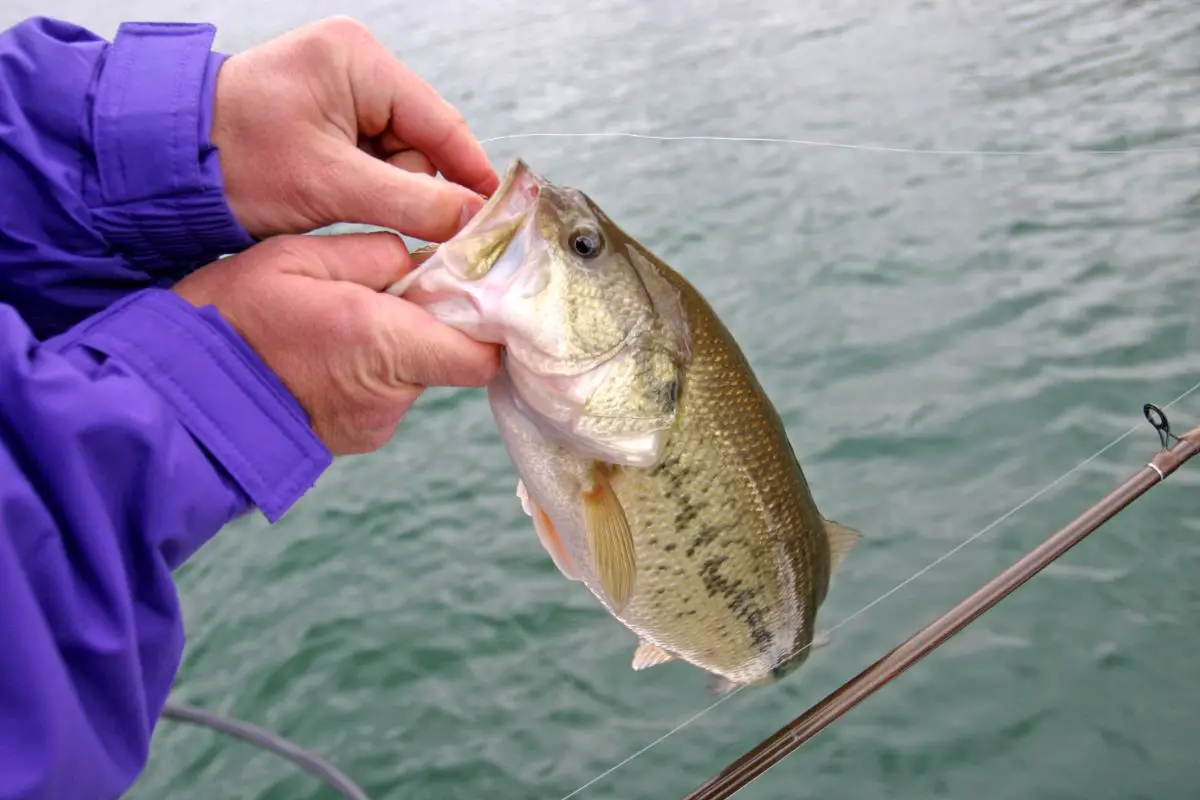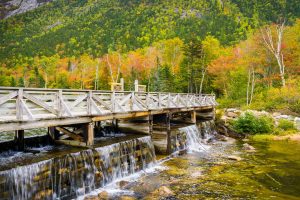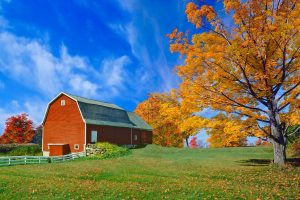The striped bass is scientifically referred to as Morone saxatilis, but you can find it more commonly being referred to as a striper, rock, rockfish, or lineside.
This is a fish which is very commonly caught in certain parts of New Hampshire. If you are in New Hampshire, and want to know where to go, and details about striped bass in New Hampshire, then keep reading to get all the information you need!
Striped Bass In New Hampshire
In New Hampshire the striped bass is one of the more sought after sportfish species in the state.
This fish is very migratory and it is known to move north up from the more mid-Atlantic area in the spring months, and then during fall it will start to go back down.
It will spend most of the months between May and October feeding at Great Bay with its food resources being plentiful with pollock, silversides, and herring.
When it comes to east coast striped bass, some of the most common spawning as well as nursery areas for them are in Chesapeake Bay and Hudson River. This spawning tends to happen from April to May, in the freshwater tributaries in the aforementioned areas.
Most female striped bass will get to around 36 inches long when they are mature and this will take between 5 and 9 years long.
This fish has a characteristically large mouth and its spines are around its gill covers and they are quite stiff and sharp. These spines can also be found near the anal fin and the anterior dorsal fin too.
This is quite a full-bodied fish as well, it tends to go from a blue color to a shade of darker olive dorsally, it has a silver belly, as well as sides.
The species also has some dark stripes which go from the gill down to the base of the bass’ tail. These tend to be the most defining features of this species and are how they get recognized.
When looking at stripers which get caught specifically in New Hampshire, they will tend to get anywhere between 10 and over 50 inches in length, and they have been found to weigh over 50 pounds.
Because of how this species has been successfully managed since the early 80s, the catches of this species have been growing since this era.
Catching Striped Bass In New Hampshire
These fish can be gotten from the shore, but you also have the option of using a boat and the casting, trolling, or drifting.
Something which has gotten more and more popular in recent years is fly fishing for this specific species of fish. Some of the most popular locations to do this are by docks, bridges, or on shorelines. If you are doing this by docks you will want them to have a drop off, or strong current close by.
Some of the best times to go fishing for striped bass in New Hampshire, is during the evening tide, or the very early morning tide, this is because striped bass are nocturnal feeders, so this is when you are most likely to find them.
The most effective way to catch them is by using a natural bait. Some natural bait which has gotten good results for this species are live eels, menhaden (or pogies), squid, herring, or some chunks of mackerel.
The best ways to fish for striped bass in this state has been using an 8 or 10 feet long surf rod, with a reel spooled, as well as a 30 pound test, or a medium to heavy spinning rod, while using a test line between 12 and 20 pounds. However, you will want to adjust this depending on conditions and your specific location.
Some of the best lures for striped bass include poppers, spoons, swimming plugs, and lead head jigs. For flies, using streamers which look similar to bait fish has been an effective strategy to use.
Where To Find Striped Bass In New Hampshire
If you want to know some of the best options for catching striped bass in New Hampshire, this section has some of our favorite spots listed, so if you need a recommendation, keep reading!

Great Bay Estuary
If you are unaware, the Great Bay Estuary is one of the main geological features which you can find on the coastline of south east New Hampshire.
There are multiple areas in this estuary to choose from like Little Bay, Great Bay, as well as Piscatqua River. There are plenty of rivers which contribute towards this estuary.
The Great Bay and Little Bay cover over 5000 acres of the tidal water as well as mud flats in this area, and there are also 9 foot tides, so the water moves quite quickly.
This is perfect conditions for stripers, but you need to keep in mind that this is not the best conditions for a stationary boat with how quickly these tides move.
The Rivers
One of the best rivers for catching Stripers in New Hampshire is the Squamscott River which actually starts as the Exeter River.
This moves down over a dam which is located in downtown Exeter and then turns to a tidal river for the 4 miles before it enters the aforementioned Little Bay.
If you visit this river during May you will find large schools of herring entering into the Squamscott after their upstream spawning while migrating to Exeter where they will collect in the lower part of the dam.
This run of herring will attract lobstermen and anglers, and the lobstermen are known to throw wire baskets in the downtown part of String Bridge with the goal of catching the herring and filling up their drums with them which can be used as lobster bait.
And of course, you will find striper fishers using these herring imitations for catching hungry stripers.
Another good river to fish at is the river’s mouth where it enters Little Bay. Here you will find the stripers and the blues chasing any bait fish while the tides change.
If you are looking to kayak fish, this is going to be one of your best options. You can go down the ramp which is at Newmarket, or you can use the ramp at Squamscott, and then all you have to do is paddle to the sod banks which are lining the Lamprey River.
There you can cast on these banks and hopefully get some big stripers!
Odiorne State Park
You can find this State Park close to Route 1A which is on the southern side of Portsmouth.
There are two different entrances to this park, and north of the park’s Science Center, you can find a boat ramp which is more available during high tide. The best way to catch stripers here is to blind cast on the edges of the channel during the outgoing tides.
Summary
Hopefully this guide has given you all the information you need about fishing for striped bass in New Hampshire. As you can see there are plenty of options of where to do this in the state, and it is a great option for going fishing for striped bass!



